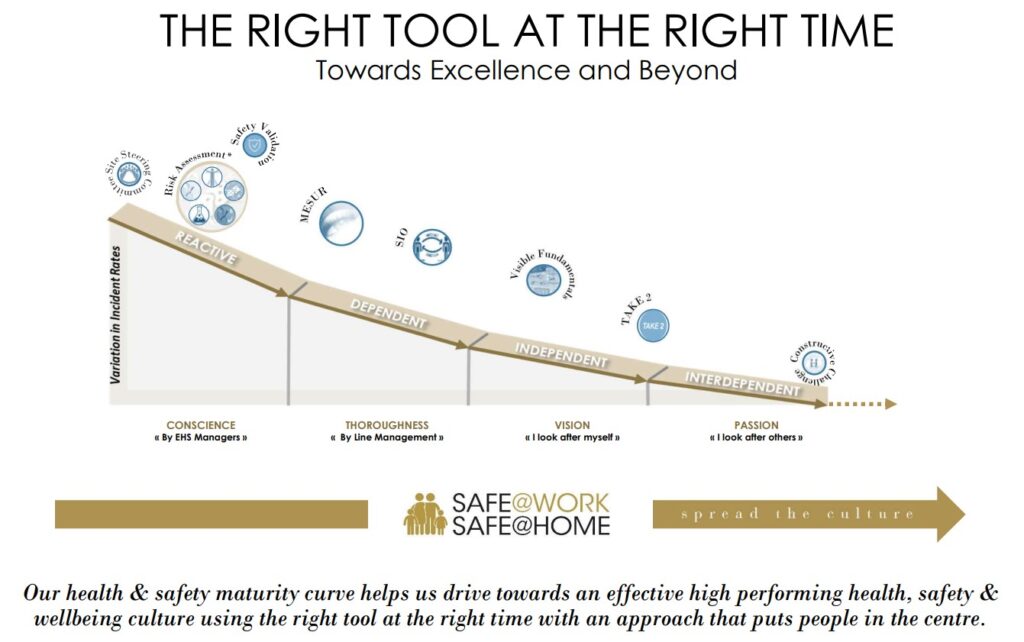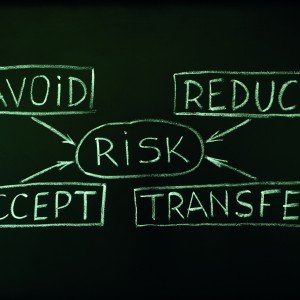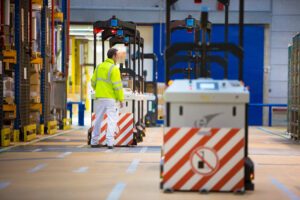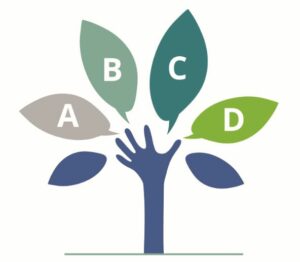In the third and last article examining the components that make up L’Oréal’s award-winning health and safety system we set out the programmes designed to surround employees with a culture of care and develop an interdependent safety ethos in which they care for their own and each other’s safety and welfare.
In this series we have already summarised some of the fundamental elements of risk assessment and control underpinning L’Oreal’s arrangements for employee protection, and the cultural and behavioural initiatives that overlay them to ensure excellence in OSH management. But the company’s slogan summarising its system – “Risk assessment, excellence and beyond” – promises a stage beyond this high performance.
In this article we set out the interventions that are expected to help the company reach that place “beyond” good health and safety metrics and attempt to make a real difference to their families, friends, local communities as well as other companies.
For Global Vice President of Health and Safety, Malcolm Staves, this involves developing the safety awareness and understanding among employees to the point they are at the ultimate interdependent stage in the L’Oréal OSH culture maturity curve (a variant on the DuPont Bradley curve). However, not all sites advance at the same speed. “In L’Oréal cultural transformation is centered on driving towards interdependent culture by applying the right tool at the right time, depending where you are on the journey,” says Staves.
Tools and time
As well as adapting OSH programmes to national cultural differences (described in the second article in this series), L’Oréal’s recognises that even within countries there will be different stages of health and safety culture development among its manufacturing, research and administrative sites as well as its field-based sales staff.
As a result, any programme to develop health and safety culture or foster risk awareness will be launched locally as soon as a site is demonstrably ready for it . OSH metrics and periodic health and safety culture audits provide feedback about readiness for progress through the system. This is what Staves means by applying the right tool at the right time. The graph below shows examples of L’Oréal’s programmes mapped on to the stages of cultural and behavioural maturity.
 One example of a tool that is only introduced when a workforce is assessed as culturally ready is “constructive challenge”. Managers and employees are trained and encouraged to challenge anyone they see behaving unsafely, and start an open dialogue about the behaviour and how it could be corrected. Rather than confrontation, the programme emphasises caring, supportive approaches that provide a positive incentive for employees to safeguard themselves and colleagues.
One example of a tool that is only introduced when a workforce is assessed as culturally ready is “constructive challenge”. Managers and employees are trained and encouraged to challenge anyone they see behaving unsafely, and start an open dialogue about the behaviour and how it could be corrected. Rather than confrontation, the programme emphasises caring, supportive approaches that provide a positive incentive for employees to safeguard themselves and colleagues.
Home comforts
 One of the main interventions to foster a culture of care but also to make risk awareness meaningful to employees personally is the global Safe@Work – Safe@Home programme introduced in 2016.
One of the main interventions to foster a culture of care but also to make risk awareness meaningful to employees personally is the global Safe@Work – Safe@Home programme introduced in 2016.
Employees are encouraged to manage safety in their own homes, protecting their families, but also encouraged to arrange outreach activities including visits to schools to teach pupils safety basics. Staves says the scheme is particularly useful in growing safety awareness among staff who work in less hazardous environments such as offices who could be more complacent about safety and health compared with those in manufacturing.
Safe@Work – Safe@Home is part of a wider campaign to develop a “culture of care” in which employees are conscious of the company’s concern for their health and welfare, not just while they are at work. The corporate health and safety function has assumed co-responsibility for all aspects of wellbeing and mental health, working with human resources staff. “In health, safety and wellbeing it is important to make sure that people truly feel they are in the centre of what you do and that you truly care,” he says.
Bearing fruit
Building a culture that puts people in the heart of its activities and keeps them safe, well and motivated, has manifestly worked for L’Oréal. Evidence of the safety programme’s effectiveness is the group’s global lost-time incident rate of 0.7 per million hours worked; the rate has reduced by almost two-thirds since 2009.
Among numerous awards for its OSH functions, in 2021 L’Oréal’s group health and safety function landed the Royal Society for the Prevention of Accidents (RoSPA) award for Corporate Health & Safety Team of the Year. RoSPA Chief Executive at the time, Errol Taylor, commended L’Oréal’s “exemplary and comprehensive approach to health and safety, both within and beyond the traditional workplace”.

Automated Guided Vehicles (AGV) in the L’Oréal Libramont plant in Belgium, in April 2015.
Beyond high health and safety standards, the company also sees putting people at the centre of its business and as a source of competitive advantage, enabling it to attract and retain the best talent to maintain its position as the number one beauty and personal care group worldwide. Over the same 14 years since 2009, the group’s consolidated global sales increased more than 100% and its stock price rose by almost 650%, compared with a 213% increase for an index of major French corporates.
Staves says the interlocking parts of the system, built over 15 years, it’s capacity to flex and adapt to different national cultures and levels of maturity where necessary, and even to changing times, are key to its success.
“Our system works within the L’Oréal framework and is delivering a risk-searching culture that making a difference to people and their lives,” he concludes. “If you want to talk statistics, our lost time and total incident performance is good, I would not say benchmark as one accident is one accident too many and that when it comes to health and safety it is a never-ending journey.
“Our recognition in the field of health and safety by external organisations like RoSPA indicates that we are doing something right and just maybe, through our programmes and culture of sharing, we will make a difference to someone, their family or another organisation and prevent an injury or save a life.”
The suite of articles summarises the content of a white paper, L’Oréal, A world-class safety system, which you can download here.
A guide for managers: Supporting employee wellbeing
This guide, written by Heather Beach, Founder of The Healthy Work Company, serves as a go-to resource to help managers support team members who may be experiencing stress or struggling with their mental health, including warning signs, duty of care and top tips.

 One example of a tool that is only introduced when a workforce is assessed as culturally ready is “constructive challenge”. Managers and employees are trained and encouraged to challenge anyone they see behaving unsafely, and start an open dialogue about the behaviour and how it could be corrected. Rather than confrontation, the programme emphasises caring, supportive approaches that provide a positive incentive for employees to safeguard themselves and colleagues.
One example of a tool that is only introduced when a workforce is assessed as culturally ready is “constructive challenge”. Managers and employees are trained and encouraged to challenge anyone they see behaving unsafely, and start an open dialogue about the behaviour and how it could be corrected. Rather than confrontation, the programme emphasises caring, supportive approaches that provide a positive incentive for employees to safeguard themselves and colleagues. One of the main interventions to foster a culture of care but also to make risk awareness meaningful to employees personally is the global Safe@Work – Safe@Home programme introduced in 2016.
One of the main interventions to foster a culture of care but also to make risk awareness meaningful to employees personally is the global Safe@Work – Safe@Home programme introduced in 2016.
